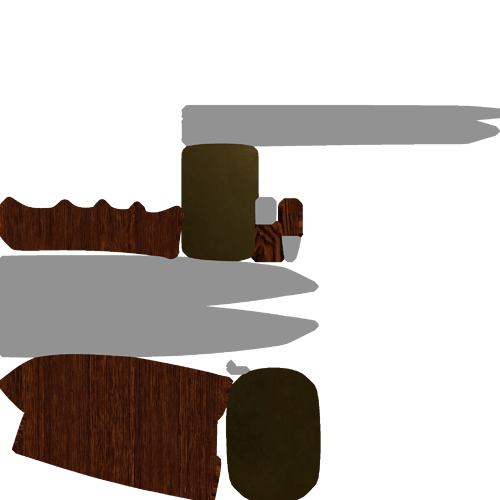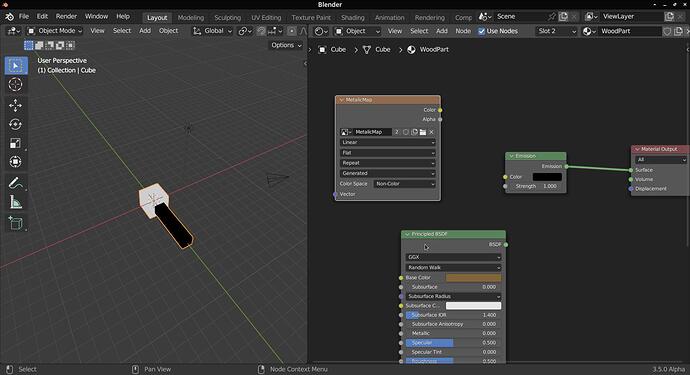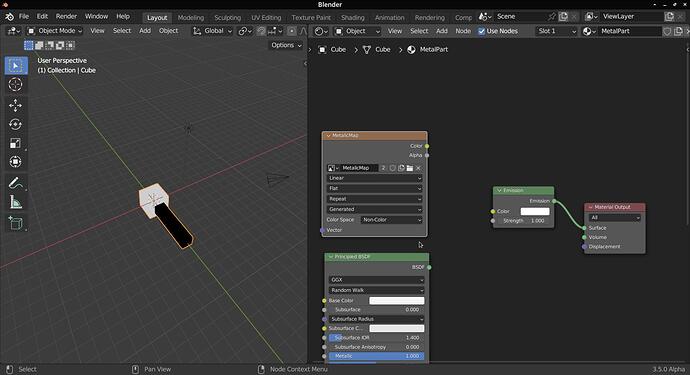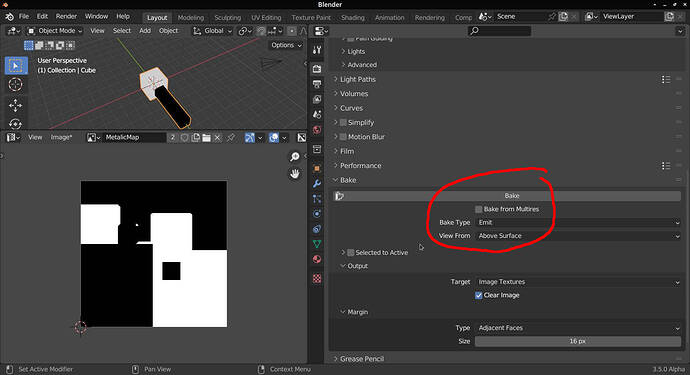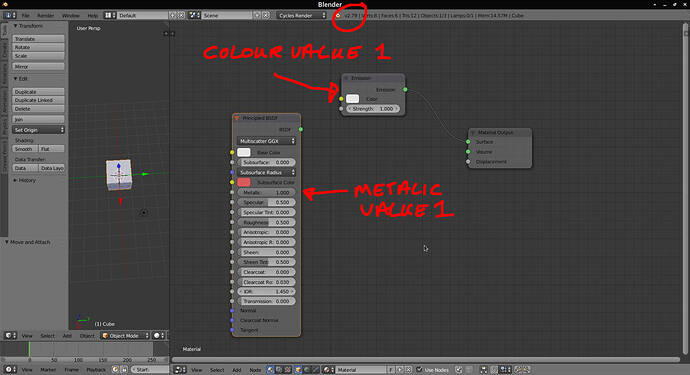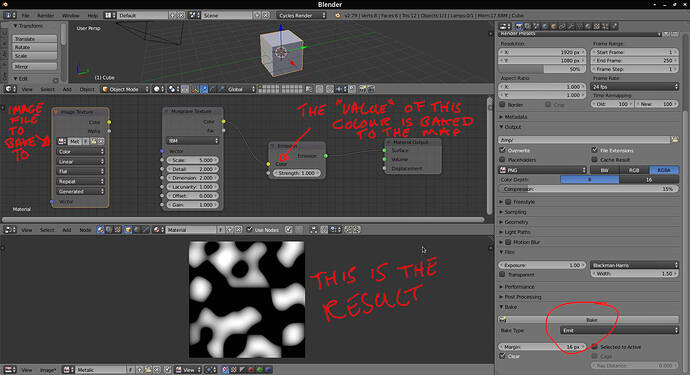hey so i use the old version of blender and im trying to bake my materials into a texture so the metal parts stay metal and the wood parts stay wooden the issue is in the video i watched how to do it use the emission in principled bsdf budt for some reason i dont have that so i dont know how else i can do it this is how it looks so far budt the blade need a seprate texture to be metal and also if you could say how i make a roughmap would also be great ![]()
No, you should not use emission to metal unless the metal is hot and glowing red.
You could take this texture and use, take only those light grey “metal” areas and change those to white and other to black, and use it as metallic map in shader.
how do i do that ? ![]()
also parts of the knife is brass how do i make it look more brass so it more light
You can edit with Gimp or Photoshop to make metallic map from that image, and then in Blender you use node setup to make shader to control, like:
if color = 0 (black) → use diffuse
if color = 1 (white) → use glossy shader.
Also you can paint that baked image and use your metal colors (brass, steel), and pick metal color from there.
You can use node editor to customize and there multiple ways to do the trick. Basicly you just want to control shader that metal parts are shiny.
Are you using Cycles as renderer? If you use Blender internal, I don’t remember anymore how to do it because it is something like 10 years ago when I used that.
i use cycles render do you think you could find a video that explains it kind confusing to understand ![]()
Youtube is full of videos how to use nodes but I haven’t watch them. You just need to that metallic texture to control where to use diffuse shader and where glossy shader. There are a lot of nodes that can be used to build that.
so all i do is just paint my texture black where the metal should be and drag it into the metal shader ? is that correct ? ![]() and what if i also want a rough map ?
and what if i also want a rough map ?
I mean that you should have other texture to control what is metal and what is not. It doesn’t matter do you use black or white for metal, it matters that you use that texture to control.
If you use Principled BSDF, you can connect that texture directly to metallic, and white is then metal and zero is non-metal.
You can also use same texture as roughness map, just put some color node between to adjust how much roughness. You can also invert the texture using node because zero roughness is more shiny
The metallic input of the principled BSDF basically uses a grayscale map (mask) to determine which parts are metallic and which are not.
Normally surfaces are either metallic or not (dialectic), there can be some exceptions for example a metallic surface that starts to rust or has a bit of dirt on it.
In Blender 0 (black) metallic means dialectic (non metallic) and white means metallic.
So to bake a metallness map for blender you need to bake a mask with wooden bits black and the metallic bits white.
Backing in Blender is a bit cumbersome and unfortunately there is no metallic option for baking.
This is where the emission shader comes in.
If you have one object with 2 materials, you will have to bake the mask somehow, so one way is to use an emission shader plugged into the surface input of the output node (you have to set this up in both materials), for the metallic material set the colour of the emission shader to 1 (pure white) and for the dialectic material set the colour to 0 (Black). Then when you bake emission you will get a mask for metallic.
If you have a metallic map for the metallic part that includes rust or dirt you can plug that into the colour input of your emission shader.
Here is a simple example of one object that has a metallic “head” and a wooden handle.
Set up your materials like this:
Then bake emit:
You can now use that metallic map in your new combined material.
so the principle shader can automatic see if its black/whit its metal texture ? okey thank you
the issue is i dont have the emission in my principle because then i already would done that im using blender 2.79b
You do not need emission in the principled shader you can use the emission shader node.
To bake the metalic map unplug the principled shader and use an emission shader, the colour value corresponds to the metalic value.
This is a 2.79 screen shot
When you bake “Emit” it will bake whichever colour value you have in the emission shader. Leave the strength at 1.
You can also input a texture into the colour value (for example a mus-grave texture).
It is important to note that the Hue/saturation does not mater what matters is only the Value (HSV)
I realize that this is a “workaround” and is cumbersome, but as there is no “metalic” bake option you have to do it somehow.
thank you and is it the same with a rough map ?
Yes you can do the same for roughness.
More modern versions of Blender do have an option to bake Roughness maps in the bake type settings but 7.9 did not. There is still no option to bake metallic maps even in the latest versions, no idea why. ![]()
could you show an example also you see the brass texture also need some metal how do i do that
You can get metal by taking Principled BSDF, set metallic value from 0 → 1
Simple cases you can just connect your metallic map to metallic to swich some areas to metal, and you can set metal colors in your albedo map what is connected to base color. Just open it in Gimp/Photoshop and paint metal areas in metal color you want.
If you want accurate modelling there is plenty of material what you can search from google like “physically based rendering brass”.
